Comalcalco, Tabasco 作者: 来源: 发布时间:2021-11-17
1.Population and Area
Pop: 173,773 (city)
Area: 723.2 km2 (munip.)
Elev: 20 masl
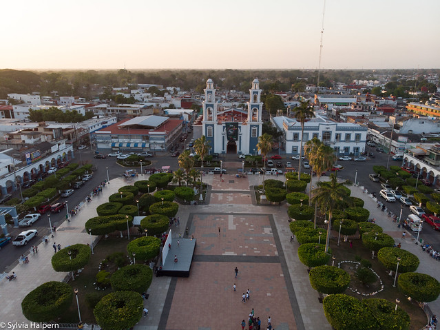
Comalcalco location in Mexico within the state of Tabasco
https://goo.gl/maps/6hSB51TECrB7uegt6
2. Natural geography
Orography
The orography of the municipality is flat with slight slopes towards the coast and scarce elevations that do not exceed 40 meters above sea level.
Hydrography
It is made up of the Cuxcuxapa, Seco, Tular and Cocohital rivers
Flora and fauna
The most prized and used flora species are: cocoa, coconut, pepper, orange, lemon, papaya and mango.
The wild fauna is constituted mainly by opossums, squirrels, rabbits and gophers; and the spider monkey and the saraguato have very little presence. The most commonly observed birds are: herons, buzzards, carrots, ducks and pijijes. There are cocoa farms in the region where chocolate is produced in an artisanal way, one of them, the best known is called "Hacienda La Luz" located in the first square of the city of Comalcalco in which the conservation of the species is sought and it has gardens of exotic flora as well as the first Chocolate museum in Latin America.
Weather
The city has a warm humid climate with abundant rains in summer, has an annual average temperature of 26.4 ° C, with the average monthly maximum in May being 40.5 ° C, and the average minimum in December and January with 22 ° C. The rainfall regime is characterized by a total water fall of 2,052 millimeters with a maximum monthly average of 342 millimeters in the month of September and a monthly minimum of 6 millimeters in the month of April. The highest wind speeds are concentrated in the months of November and December, with speeds reaching 30 kilometers per hour, with the lowest wind speeds appearing in June, with speeds of 18 kilometers per hour. According to the climate chart edited by S.P.P.
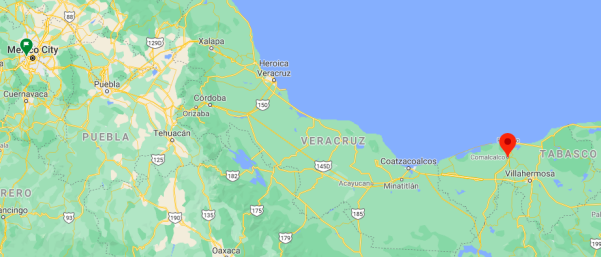
Getting there and around
Get there
By air – The quickest way to get from Mexico City to Comalcalco is to fly. You can fly to the Villahermosa airport and take a bus or drive from there to Comalcalco. The quickest flight from Mexico City Airport to Villahermosa Airport is the direct flight which takes 1h 20m.
By car – The distance between Mexico City and Comalcalco is 635 km. The road distance is 739.4 km, and it takes 9h 30m, approximately, via 150D and 145D highway.
By bus – The cheapest way to get from Mexico City to Comalcalco is to bus via Minatitlán which costs $650 - $1300 and takes 12h 20m.
https://www.rome2rio.com/s/Mexico-City/Comalcalco
Car Rental – To explore Mexico’s provincial towns and cities—including its beach locations and the scenery and attractions near them— consider renting a car for your visit. Having your own car will give you more flexibility than using public transport options and, in some cases, offer you access to places which are otherwise difficult to visit without the use of a car.
COVID19 – International entry into Mexico from United States
Allowed for: All visitors arriving by air. Mexico land borders are closed to non-essential travel
Restricted for: There are no current restrictions.
Get around
Local Buses – Local buses and mini-buses (combis or micros) are available locally for a fraction of the cost of a taxi around town. You need to speak Spanish to be able to ask for directions or ask the driver to tell you where to get off.
Taxis – Taxis in most of Mexico’s towns and cities are not metered, so agree your price before you get in. Taxi travel is very affordable in Mexico, in comparison to the USA, Canada and Europe, and so provides a viable means of public transportation in Mexico. Your hotel can arrange taxis for you; some post their rates on a board in the lobby; taxi hotel rates are usually higher than cabs you hail off the street. If you speak Spanish, you will have a distinct advantage and be able to negotiate a price with the driver.
Uber is expanding rapidly across Mexico and now offers services in cities across the country, including: Mexico City, Toluca, Cuernavaca, Puebla, Querétaro, León, Aguascalientes, San Luis Potosí, Guadalajara, Monterrey, Hermosillo, Tijuana, Mexicali, and Mérida. Uber has been adding Mexican cities to its network every year, check for availability when you arrive at your destination in Mexico.
Cabify and Didi are also developing and currently operate in cities including Mexico City, Toluca, Monterrey, Puebla, Querétaro and Tijuana. Check for availability in the city you are visiting.
These services offer people with smartphones a way to book a cab through a mobile app for a pre-agreed price. Fares are comparable with Sitio type cabs, and sometimes trade at a premium to this when local demand increases.
https://www.mexperience.com/transport/taxi-travel-in-mexico/#51
3. ECONOMY
GDP: 15,528 M MXN (2010)
https://imco.org.mx/ciudades2010/ciudades/82_Comalcalco.html
4. Industry characteristics
The main activity in the city is the oil activity, since there are important offices of Petroleos Mexicanos in which a large number of oil fields in the area are controlled, and there is also the Bellota-Jujo Integral Asset. There are also large cocoa fields and cocoa farms in Comalcalco, it is one of the main producers nationwide since large tons are exported annually, because there are many products derived from this raw material such as: pozol, a typical drink of this place, That is why there are dedicated industries or elaborate products derived from cocoa.
Industry
In the city there is the Salmi del Sureste food and sausage products factory, which distributes its products in the main self-service stores in the state of Tabasco and the entire southeast of the country; There are also important and prestigious chocolate and cocoa derivatives factories, such as Cacep, Wolter, Córdoba, El Chontal, etc. Comalcalco is the main producer and exporter of cocoa in Mexico and the world, its cocoa route was considered the 4th best place in the world to go to buy and consume chocolate.
Commerce
Being the third most important city in the state, Comalcalco has an important commercial activity and its area of influence reaches other cities such as Paraíso, Jalpa de Méndez and Cunduacán. The city has all kinds of commerce, such as supermarkets and self-service stores of national chains, cinemas, bars, hotels, event rooms, automotive agencies, car sales, grocery stores, clothing, furniture, footwear, hardware stores, materials of construction, stationeries and books.
Key project: Waste management plant
CNH approves Comalcalco and Proyecto Llave a Pemex; add eight exploration plans
Mexico City (Redacción / Energía Hoy). - In the context of the 7th Extraordinary Session of 2020, the Governing Body of the National Hydrocarbons Commission (CNH) approved eight Exploration Plans presented by Pemex Exploración y Producción for two Projects, whose Assignment titles were issued by the Ministry of Energy on August 28, 2019.
This is the COMALCALCO PROJECT, which includes two Assignments: AE-0146-Comalcalco and AE-0147-Comalcalco. And from PROJECT KEY, with six Assignments: AE-0124-Key, AE-0126-Key, AE-0127-Key, AE-0128-Key, AE-0129-Key and AE-0130-Key.
Both Projects share the same objectives in their respective Development Plans: Incorporate hydrocarbon resources seeking the continuity of the established Cretaceous and Tertiary plays, as well as the evaluation of the potential of the hypothetical plays and the generation of new exploratory prospects.
Through the acquisition and / or processing of geophysical information; conducting exploratory studies and drilling exploratory prospects. The Minimum Work Commitment (CMT) consists of the drilling and completion of an exploratory well during the initial Exploration period.
The Comalcalco project is located in the land part of the Southeast of the Mexican Republic, includes part of the states of Tabasco, Chiapas and a small portion of Veracruz, within the Cuencas del Sureste oil province.
The Assignment AE-0146-Comalcalco, has a surface: 1,190.91 km² and the Assignment AE-0147-Comalcalco, has an area: 1,680.67 km². For the two Assignments of the Comalcalco project, a possible incorporation of hydrocarbon resources in the Tertiary and Mesozoic plays is estimated between 38 and 83 mm boe, considering both operating scenarios, with an investment ranging from 48.5 to 140.6 mm USD.
https://energiahoy.com/2020/02/05/cnh-aprueba-comalcalco-y-proyecto-llave-a-pemex-suman-ocho-planes-de-exploracion
5. Attractions
Comalcalco Archaeological Site
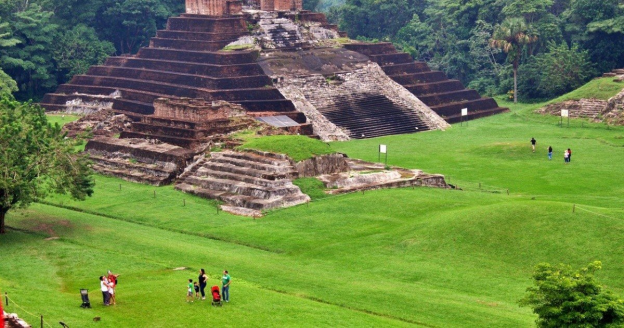
A place that you should visit is Comalcalco Archaeological Site, where the architectural Mayan vestiges highlight for being the only one brick-built. It’s in Chontalpa central area, on Río Seco east bank and only 2 kilometers from Comalcalco town.
Walking around the place will take you to a vast area where Classic period’s most important architectural ensembles are found. Discover the bricks characteristics that, mostly, were “engraved” by Mayan artisans, reproducing on them countless figures.
You can begin in the Gran Acrópolis, that represents the structures continuous building—on the same base, a series of civil and religious buildings are grouped here. The most important are the Palace, the Tumba de los Estucos, Templos IV and VII, as well as the first Mayan cemetery.
Continue in the extreme southeast with the Plaza Norte. You can see here Templo I, the biggest one—it rises about 20 meters above plaza level. You can only see the main facade of Templo II, while Templo III is a three construction stages pyramidal structure.
In the Southeast Plaza, under which a multiple burial was found, is the platform that supports Estructura 6.
The Acropolis is a smaller Gran Acrópolis version. This group is related to the whole Plaza Norte.
Meanwhile, the Cemetery is considered the first of its kind because 116 funeral burials over a thousand years old were found.
La Luz Cocoa Hacienda
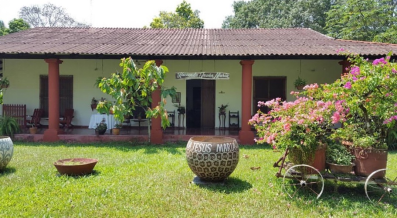
Comalcalco keeps its cocoa smell through its haciendas. Go over each one of these old houses to discover the architecture and history that bet on the enjoyment of the ancient food of the gods.
Considered a “Museo Vivo del Cacao” (Living Museum of Cocoa), Hacienda La Luz covers about 26 hectares of cocoa plantations and also of fruit trees and tropical flowers. It’s on Ingeniero Leandro Rovirosa Wade boulevard, five kilometers away from Comalcalco Archaeological Site.
This place belonged to Dr. Otto Wolter Hayer, a German immigrant who arrived in the 1930s to build one of the first chocolate factories.
The hacienda tour begins in the beautiful garden whose plantations, some regionals and some exotic, can be seen with the naked eye. Here you get to know heliconia, gingers and tropical plants great diversity.
It continues with history, harvest periods, cultivation procedures and their advantage. You will also learn about the manufacturing process of this tasty fruit that is chocolate.
From there you walk to the hacienda insides—regional constructions’ old character is still preserved here by having been made with brick, lime, no-rods and locals handmade baked-clay tiles.
Finca Cholula
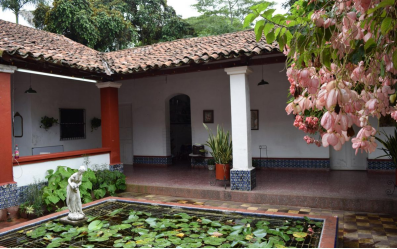
Another hacienda that you must visit while in Comalcalco, is Finca Cholula, one of the region's oldest to be founded in the 19th century by Franciscan missionaries.
It is 300 meters from the Archaeological Site of Comalcalco. Here plantations guided tours are offered in order for you to know the great cocoa pods variety as well as the ecosystem conservation’s importance for endemic species.
On tour, you can carry out organic farming activities linked to ecology and flora and fauna research as well as new ideas’ exploration to work with.
After activity, continue visiting “El Chontal” chocolate factory and delight yourself with the great variety of chocolates they produce. Enjoy the regional plants nursery and finally visit the handicraft store to take some cocoa bean-made souvenirs.
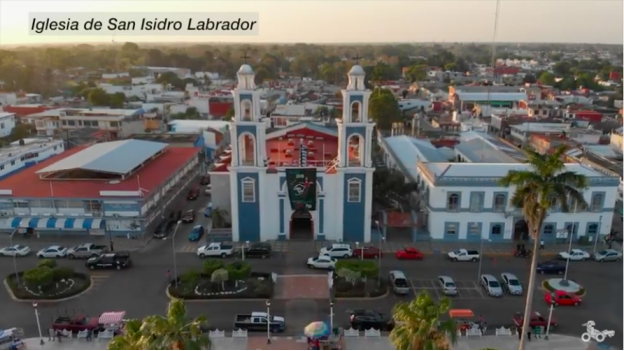
A Day in Comalcalco, Tabasco, Mexico
https://youtu.be/sRqf0kq_Sis
6. History
The rise of the Mayan city of Comalcalco can be placed between the years 300 to 900 AD. C., in the Classic and Late Classic periods of the Mayan culture and Mesoamerican chronology.
Comalcalco is the westernmost city established by the Mayan population (not counting the Huastecs, who speak Mayan but whose early separation from the common trunk, prevented them from sharing the cultural traits of the classical Mayans). The name of the city in Mayan was "Joy Chan", unrelated to the current name, of Chontal origin, which comes from its name within the Aztec Empire. The flourishing of the Mayan Comalcalco followed that of Palenque, and was based on the commercial networks established by the Chontal Mayas throughout the southern Gulf of Mexico and around the Yucatan peninsula. By the arrival of the Spanish conquerors the city was already abandoned, and the area was inhabited by the Chontales, a branch of the Mayans who speak the Chontal language of Tabasco, from the Chol-Tzotzil subfamily.
Foundation
Today the City of Comalcalco was founded on October 27, 1827, according to a Decree of the H. Congress of the State dated October 25 and signed by Juan Mariano Sale, President Deputy and Antonio Solana and Fausto Gordillo Secretary Deputies; being published and circulated by Don Marcelino Margalli, Governor of the State and José Mariano Troncoso as Secretary, on October 27, 1827.
The town was located in the Río Seco ranchería in the Municipality of Jalpa (today Jalpa de Méndez) and the decree indicates that it would be located on the island that is in the center of the river; it was named "San Isidro de Comalcalco".
Faced with such an event, the first authorities sought the highest hills of the islets to establish the Government House, the Church, the Public Square and the Cemetery. They put special interest in the Public Square, as it would be the meeting place for the society of the nascent town. In a rustic way, the space that would be the park was allocated. A short time later, the serene Jacobo Centeno lit the street lamps on Sunday nights, Thursdays and holidays, to the delight of passers-by.
To enter the town, they had to cross some bridges made of thick trees, such as the San José pass, the Doña María Cruz pass, later known as the Callejón de las Bailonas pass, the Don Victoriano pass and the main entrance. To the town was the Santo Domingo bridge, named for being in front of the ranch of the same name, to the east of the town. Between 1845 and 1855 the Town of Comalcalco must have been elevated to Villa, although this decree has not been found in the H. Chamber of Deputies.
On November 14, 1834, the First City Council of Comalcalco was created or what is the same, it was raised to the Municipality of San Isidro de Comalcalco, including in its jurisdiction what is now the municipality of Paraíso.
French intervention
On October 8, 1863, in the town of Comalcalco, Colonel Gregorio Méndez Magaña took up arms against the French invaders, who had participated with Governor Victorio Victorino Dueñas in the defense of San Juan Bautista, and who would become the soul of the Tabasco insurrection.
Méndez begins his fight against the invading army being then assisted by Regino Hernández, Mamerto González, Bernabé Fuentes and Crescencio Rosaldo from Comalcalquenses. However, the Liberals from Tabasco are defeated on the 9th in Comalcalco, so Gregorio Méndez travels to the town of San Antonio de Cárdenas and joins the forces of Andrés Sánchez Magallanes.
Already better organized, Gregorio Méndez and his men took Comalcalco on October 20 of that same year, being received with displays of enthusiasm by the population. The head of the invading force, Manuel Romanco, fled to the state capital.
Installed in Comalcalco, Gregorio Méndez reorganized his army and recruited volunteers from the surroundings to swell his ranks, arriving from Paraíso, Jalpa and Cunduacán.
On the 24th, people from Paraíso, Comalcalco and San Juan Bautista joined. Méndez then proceeds to organize his forces. He spends four days from 25 to 28 in disciplining his troops as much as possible, which, by then, numbered 350 very modestly equipped men.
By Decree of the H. Congress of the State, dated September 20, 1897, it is elevated in just recognition of its drive and diligence and its recognized patriotism, to the category of city, and from that date it is called "Comalcalco".
7.Contact Information

City Mayor: Lorena Méndez Denis
Phone number: +52 (933) 114 0000
E-mail: presidencia@comalcalco.gob.mx
Facebook: https://www.facebook.com/lorenamendezd
Twitter: https://twitter.com/lorenamendezd
Website: http://www.comalcalco.gob.mx
Govt. Office Address: Plaza Juárez S/N, Col. Centro, Comalcalco Tabasco, Cód. Postal, 86300
